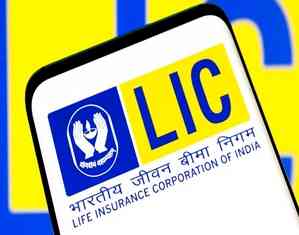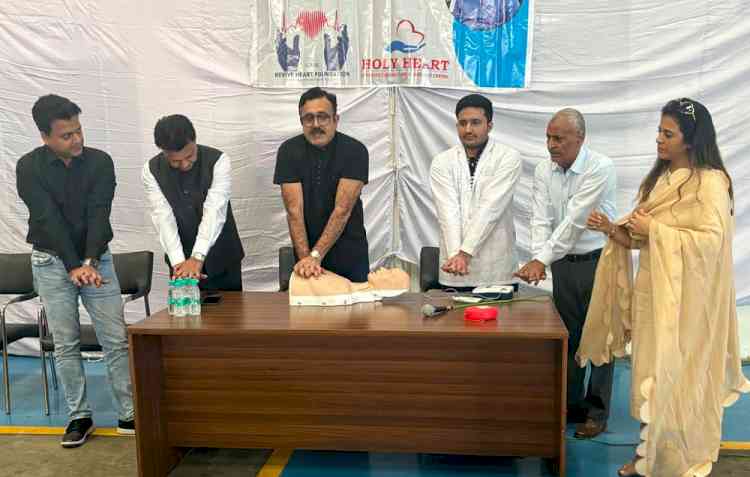Role of robotic surgery in cardiothoracic procedures
In recent years, the field of medicine has witnessed remarkable advancements in technology, transforming the landscape of surgical procedures. One such breakthrough is the integration of robotic surgery into cardiothoracic procedures, offering a new dimension to precision and minimally invasive interventions.

by Dr Rajeev Vashisth, Sr. consultant (Cardio Thoracic and Vascular Surgery), HCG Hospitals, Bhavnagar
In recent years, the field of medicine has witnessed remarkable advancements in technology, transforming the landscape of surgical procedures. One such breakthrough is the integration of robotic surgery into cardiothoracic procedures, offering a new dimension to precision and minimally invasive interventions.
Robotic surgery in cardiothoracic procedures involves the use of advanced robotic systems to assist surgeons in performing intricate and precise surgical interventions on the heart, lungs, and other structures within the thoracic cavity. This innovative approach combines the skills of the surgeon with the capabilities of robotic technology to enhance the overall precision and effectiveness of the procedure.
Cardiothoracic procedures refer to a distinct area of surgical interventions concentrated on the organs and structures located in the thoracic cavity, including the heart, lungs, esophagus, and related components. The range of cardiothoracic procedures encompasses various surgical techniques, spanning from conventional open-heart surgeries to less invasive methods.
Minimally Invasive Approach
Traditional open-heart surgeries often require large incisions, leading to prolonged hospital stays and a more extended recovery period. Robotic surgery, on the other hand, allows for a minimally invasive approach, using smaller incisions and precise instruments controlled by a robotic system. This approach offers numerous advantages, including reduced blood loss, shorter hospital stays, and faster recovery times for patients.
Enhanced Precision
One of the key benefits of robotic surgery in cardiothoracic procedures is the unparalleled precision it provides to surgeons. The robotic system translates the surgeon's hand movements into smaller, more controlled actions, enabling intricate maneuvers in confined spaces. This heightened precision is particularly crucial in delicate cardiac and thoracic surgeries, where accuracy can significantly impact patient outcomes.
Improved Visualization
Robotic surgery systems incorporate advanced imaging technologies, offering surgeons enhanced three-dimensional visualization of the operative field. This improved visualization allows for a more detailed examination of anatomical structures, facilitating precise identification and manipulation of tissues. The high-definition cameras used in robotic surgery systems provide a clearer and magnified view, aiding surgeons in performing complex procedures with greater confidence.
Reduced Trauma to Patients
The minimally invasive nature of robotic surgery translates into reduced trauma for patients. Smaller incisions result in less pain, minimized scarring, and a decreased risk of infection. Patients undergoing cardiothoracic procedures with robotic assistance often experience a quicker return to their normal daily activities, contributing to an overall improved quality of life.
Expanding Treatment Options
The versatility of robotic surgery systems has expanded treatment options for patients with complex cardiothoracic conditions. Procedures that were once deemed too risky or technically challenging can now be approached with greater confidence using robotic assistance. From VALVE SURGERIES to coronary artery bypass grafting, the scope of robotic surgery in cardiothoracic interventions continues to grow, offering new hope for patients facing challenging cardiac and thoracic conditions.
Challenges and Considerations
While the benefits of robotic surgery in cardiothoracic procedures are evident, it is crucial to acknowledge the challenges associated with this technology. The initial cost of implementing robotic systems, the need for specialized training, and ongoing maintenance expenses are factors that institutions must consider. Additionally, the learning curve for surgeons transitioning to robotic-assisted procedures requires dedication and time.
The integration of robotic surgery into cardiothoracic procedures marks a significant milestone in the evolution of surgical techniques. The combination of a minimally invasive approach, enhanced precision, improved visualization, and reduced trauma to patients makes robotic surgery a valuable tool in the cardiothoracic surgeon's arsenal. While challenges exist, the continued refinement of robotic systems and the growing expertise among surgeons promise a future where more patients can benefit from these advanced technologies, leading to better outcomes and an improved standard of care in cardiothoracic surgery.


 City Air News
City Air News 











